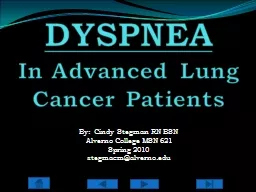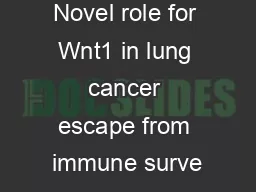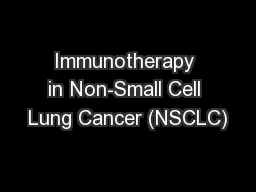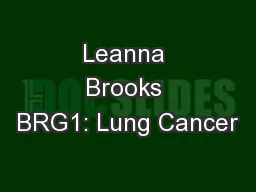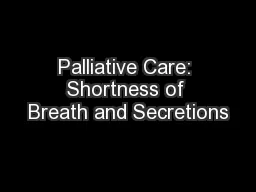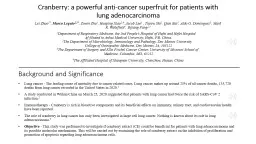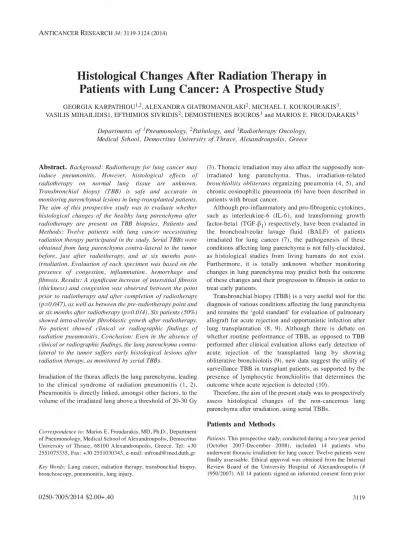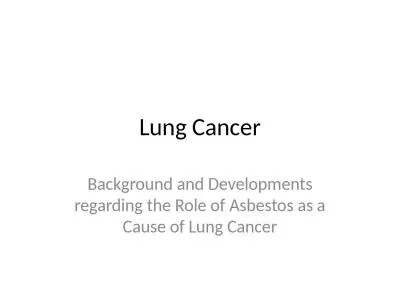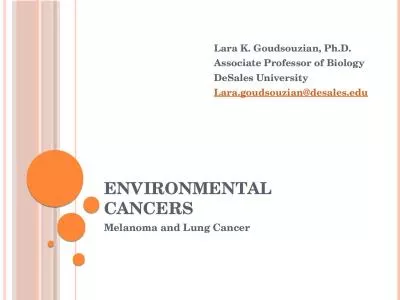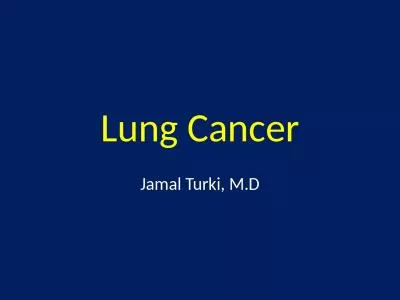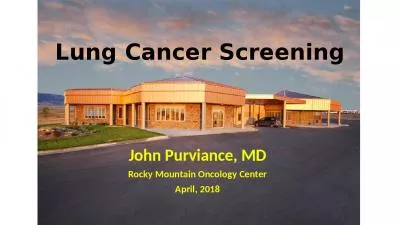PPT-DYSPNEA In Advanced Lung Cancer Patients
Author : pamella-moone | Published Date : 2018-09-24
By Cindy Stegman RN BSN Alverno College MSN 621 Spring 2010 stegmacmalvernoedu How to navigate this tutorial To advance to next slide click on box To advance to
Presentation Embed Code
Download Presentation
Download Presentation The PPT/PDF document "DYSPNEA In Advanced Lung Cancer Patien..." is the property of its rightful owner. Permission is granted to download and print the materials on this website for personal, non-commercial use only, and to display it on your personal computer provided you do not modify the materials and that you retain all copyright notices contained in the materials. By downloading content from our website, you accept the terms of this agreement.
DYSPNEA In Advanced Lung Cancer Patients: Transcript
By Cindy Stegman RN BSN Alverno College MSN 621 Spring 2010 stegmacmalvernoedu How to navigate this tutorial To advance to next slide click on box To advance to previous slide click on box. Palliative care workshop for EM residents. July 29, 2015. Disclosures. No disclosures. Case. “CTAS 1 to the . resus. room”. mid 70s female in acute respiratory distress. Has been placed on O2 by FM by EHS but despite this still only has O2 . .. . Preliminary results. . Dimitra . Kerdidani. , . Vaso. . Karavana. , Sofia . Magkouta. , Aggeliki . Meligova. , Charis Roussos, Spyros . Zakynthinos. , Ioannis . Kalomenidis. , Maria Tsoumakidou. . Renato G. Martins, MD, MPH. Medical Director, Thoracic/Head and Neck; General Oncology and Hematology. Seattle Cancer Care Alliance. July 28, 2015. 11:30 am – 12:30 pm, EST. ICLIO e-Course 02. Objectives. Lung cancer. What does this have to do with BRG1?. LOH . in chromosome 19 is frequent in NSLC tumors. BRG1 . is very frequently inactivated in lung tumors. . (as many as 1/3 of NSCLC cell lines have mutations in BRG1). Hong-. Phuc. Tran, M.D.. Learning Objectives. Understand . pathophysiology. of dyspnea. Learn how to evaluate dyspnea. Understand reversible causes / potential contributors of shortness of breath. Manage shortness of breath in terminally ill patients. Consequences of the Lack of Patients of color & Structural barriers to Quality. Christopher S. Lathan, M.D., M.S., M.P.H. Assistant Professor of Medicine. Faculty Director of Cancer Care Equity, Dana-Farber Cancer Institute. Interview with Shirish M . Gadgeel. , MD . January 14, 2020. Case 1: 72-year-old woman enrolled on KEYNOTE-021. 2014: 72-year-old female patient with chest pain, cough and dyspnea is diagnosed with Stage IV squamous cell carcinoma. Lei Zhao. 1*. , . Marco Lequio. 2,3*. , . Ziwen. Zhu. 3. , . Huaping. Xiao. 2,4. , Jacob Lee. 3. , . Tianru. Shi. 2. , Qian Bai. 3. , Aldo G. Dominguez. 3. , Mark R. Wakefield. 3. , . Yujiang. Fang. 3119 Correspondence to:of Pneumonology, Medical School of Alexandroupolis, DemocritusUniversity of Thrace, 68100 Alexandroupolis, Greece. Tel: +302551075335, Fax: +30 2551030343, e-mail: mfroud@med.du Lung Cancer: Medical Aspects of Causation. Aneuploidy. Unlimited cell reproduction and failure of cell death. Animal Studies. Basic Toxicology. New Data on Causation. New Studies. New Statistics. Number of cases. Lara K. . Goudsouzian. , Ph.D.. Associate Professor of Biology. DeSales. University. Lara.goudsouzian@desales.edu. Melanoma. Melanocytes. Produce Melanin. Melanin is a dark pigment. The melanin travels in vesicles called . , M.D. The term lung cancer, or bronchogenic carcinoma, refers to malignancies that originate in the airways or pulmonary parenchyma. Lung . cancer . is among . the most common . cancers worldwide. Lung cancer is the leading cause of cancer-related mortality in both men and women. . Purviance, MD. Rocky Mountain Oncology Center. April, 2018. Overview. Rational for Lung Cancer Screening. Data establishing screening CT scans as standard of care. Clinical Workflow and shared decision making. Use of guidelines. The diagnosis, staging and fitness assessments in this pathway should be completed with reference to current national guidelines. The NOLCP is also supported by a series of . Diagnostic Standards of Care.
Download Document
Here is the link to download the presentation.
"DYSPNEA In Advanced Lung Cancer Patients"The content belongs to its owner. You may download and print it for personal use, without modification, and keep all copyright notices. By downloading, you agree to these terms.
Related Documents

